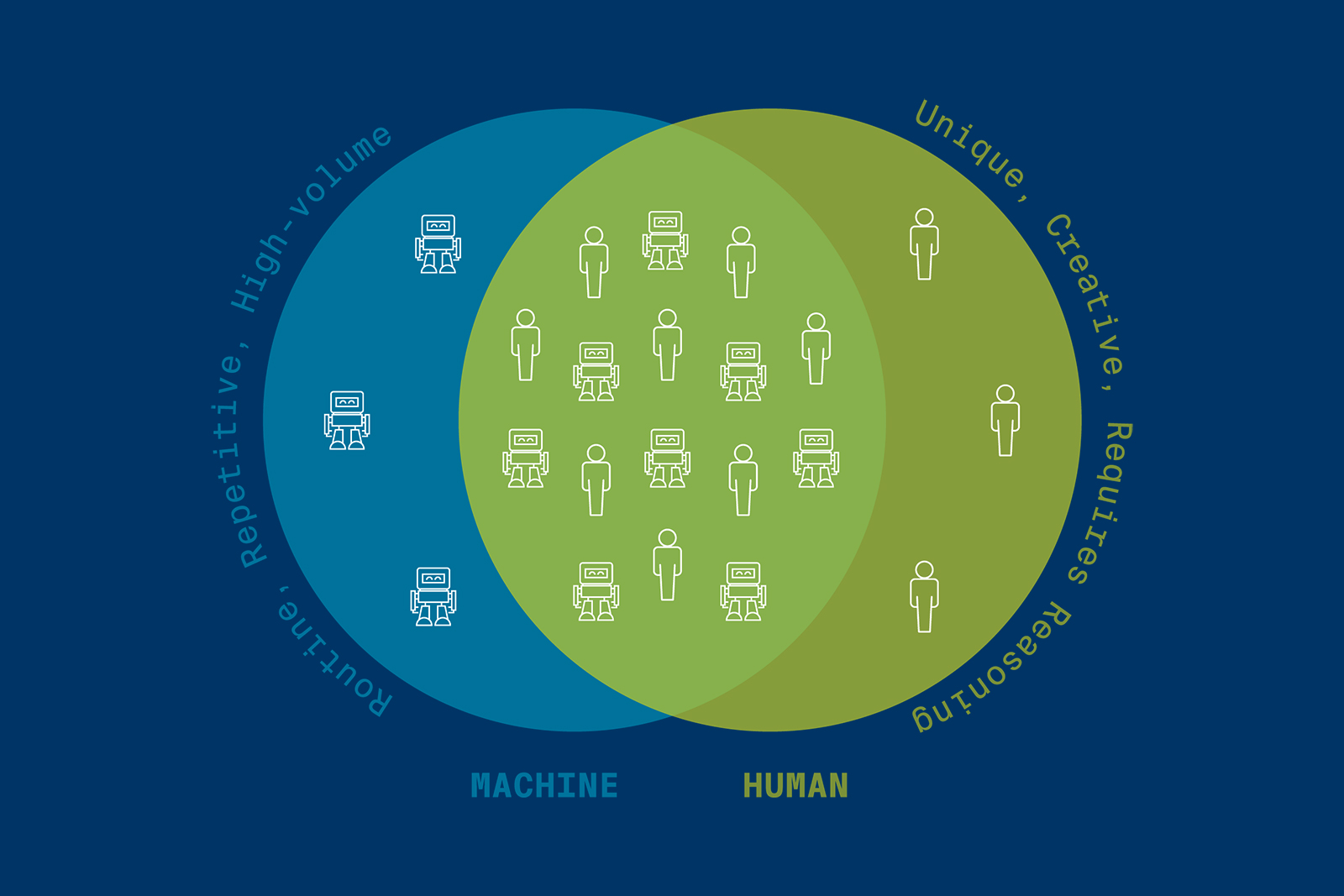Recommended

How will automation affect employment? Which tasks could be enhanced by machine learning and which might render human labor obsolete? Erik Brynjolfsson PhD ’91, director of the MIT Initiative on the Digital Economy, postdoctoral researcher Daniel Rock SM ’16, PhD ’19, and Tom Mitchell at Carnegie Mellon University have found some answers to these questions using a suitability for machine learning (SML) rubric.
While the media might foretell a future overtaken by robots with vast swaths of the workforce displaced from their jobs, that won’t happen anytime soon, Brynjolfsson says. The team’s rubric serves as a guide to which jobs or occupations could be reorganized—not eliminated. “We’re very far from what researchers call artificial general intelligence, where AI can do the full spectrum of things that humans can do, like the Hollywood robots HAL or the Terminator. There’s almost no occupation where machine learning just runs the table and can do everything,” says Brynjolfsson, the Schussel Family Professor of Management Science.
The pair started by working with a team of machine learning experts to create a 23-question rubric that could differentiate between tasks that were suitable for machine learning versus those that weren’t. They then applied the rubric to the O*NET OnLine network data set, a resource that covers 964 occupations mapped to 2,069 direct work activities shared across occupations. One by one, they applied the questions to each job—Does this task require complex, abstract reasoning? Does it require wide-ranging conversational interaction?—and then used a human intelligence task crowdsourcing platform to score each job based on its suitability for machine learning.
“This rubric gives a map of where human labor will be more valuable, versus where machines will be increasingly able to do things,” Brynjolfsson says.
This rubric gives a map of where human labor will be more valuable, versus where machines will be increasingly able to do things.
In most cases, Brynjolfsson says that machine learning will only affect parts of jobs. This means the task of leaders will be to redesign and reengineer jobs, not simply eliminate them. He calls this the “reinvention” of jobs.
“Most occupations consist of a couple of dozen or more distinct tasks. For instance, there are 27 distinct tasks that a radiologist needs to do. One of them is reading medical images. But there are other things that they have to do, like counsel patients, coordinate care with other doctors, and so forth,” he explains.
So, while a robot might be able to read images, could it deliver a compassionate diagnosis? Probably not.
In that vein, low-SML tasks often involve “empathy, human relations, persuasion, teamwork, care, and comforting,” says Brynjolfsson. “We’re deeply wired to connect to other humans, so compared to machines, we have a comparative advantage in connecting to other humans.”
Humans are also better at creativity than robots (for now), as well as at tasks that involve manual dexterity. Hence, jobs such as massage therapy and archaeology have low SML scores, whereas mechanical drafters and credit authorizers—jobs that require repetition and routinization— yield higher ones.
He says that the rubric will help leaders decide how to retrain their workforce and determine which skills to invest in heavily. Ultimately, he says, organizations and employees who achieve a symbiotic relationship with machines will thrive.
“People who will be most successful will be [those] who can leverage machine learning systems by combining human and machine insights,” Brynjolfsson says.
For instance, a computer might help a radiologist scan images more quickly, leaving time for the doctor to see more patients. The sooner society realizes this kind of benefit, the better, Brynjolfsson says. He points to electricity in the 1890s and the early 1900s. A game-changing innovation to be sure—yet the resulting productivity surge didn’t happen until the 1920s. Why? Nobody knew how to reorganize their workforce to embrace the budding technology.
The same holds true with reorganization today.
“How do we change our business processes, how do we change our skills, how do we change the products and services we deliver to take advantage of this?” he asks. “That’s harder. That requires a lot of creativity and entrepreneurship. But I hope it will happen faster than 30 years this time around. In fact, I’m sure it will.”
This story was originally published in the Summer 2019 issue of MIT Spectrum. Illustration (top): Niki Hinkle.







